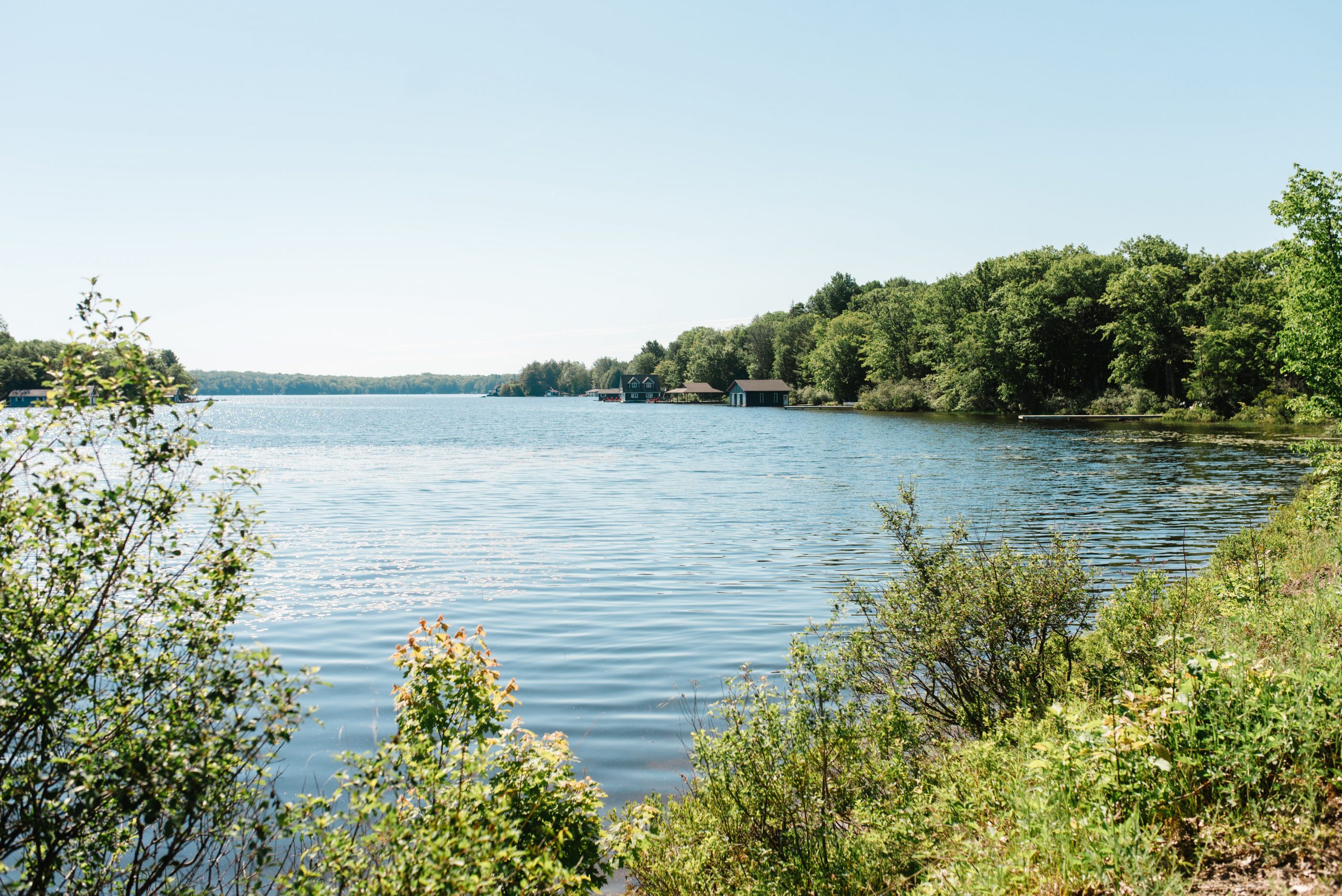Quitting cannabis (weed) smoking can be difficult. In Canada, more people use cannabis than any other recreational drug (1). While less harmful than cigarettes and more addictive drugs like cocaine and opioids, weed does not agree with everyone. Smoking weed can develop into an addiction that can negatively impact your home, work, and social life.
In the short-term, smoking weed can impair your cognitive development, attention span, motor skills, and driving (2). Over time, it can negatively affect your memory, cause lung damage, and can lead to or worsen schizophrenia (2). Smoking weed while pregnant can cause damage to a fetus, curbing its development (3). For teenagers—one of the largest demographics of people who smoke weed in Canada (4)—smoking weed can cause lasting changes in the brain and increase the risk of mental illness, including depression, anxiety, and psychosis (5).
Looking for a solution for quitting smoking weed, or simply learning how to stop smoking weed as much? Here’s what you need to know about smoking weed and recovering from cannabis use disorder.
Learn More About Our Cannabis Addiction Treatment Program
Table of Contents
- Is Marjuana Addictive?
- Possible Weed Withdrawal Symptoms
- What Helps for Quitting Smoking?
- Surround Yourself With Supportive People
- Get Help With Your Marijuana Addiction From a Recovery Center
Is Marijuana Addictive?
While not everyone who smokes weed becomes addicted to cannabis, the number of people who do develop an addiction is significant. Research suggests that as many as 30% of people who use cannabis develop a substance use disorder (6).
For some people, the more weed they smoke, the greater their tolerance to the drug—this means they need to smoke more weed to feel the same effects (7). It is possible to become addicted to cannabis, especially if you are smoking large amounts of weed often (7).
Addiction can make it difficult to find a solution for quitting smoking weed. When you become dependent on smoking weed, your health, social life, schoolwork, and career can suffer. A weed-smoking addiction can also impact your finances (7).
Possible Weed Withdrawal Symptoms
Withdrawal happens when you try to quit smoking weed or stop smoking weed as much after long-term use. Almost half of people who smoke weed go through withdrawal once they quit, recent research suggests (6). People who smoke weed regularly are more likely to experience cannabis withdrawal syndrome. Smoking weed daily and concurrently with cigarettes or other tobacco products is associated with a higher risk of withdrawal (8).
Symptoms of withdrawing from smoking weed include (6):
- Sleeplessness
- Bad dreams
- Anxiety and depressions
- Anger and irritability
- Nausea and loss of appetite
- Tremors (the shakes)
- Flu-like symptoms like chills, headaches, sweats, and muscle aches
While safer than detoxing from drugs like opioids—where withdrawal symptoms themselves can be life-threatening without medical supervision—withdrawing from smoking weed is still an uncomfortable experience (6). This is especially true for people suffering from concurrent mental health disorders and who use other substances, like benzodiazepines and alcohol (6). The length and severity of these symptoms depend on how long you have been smoking weed. Without the necessary support from qualified treatment professionals, withdrawing from smoking weed can lead to relapse.
At GreeneStone Centre for Recovery, we understand how difficult it is to quit smoking weed. Our facility two and a half hours north of Toronto offers inpatient cannabis use disorder treatment and medically supervised detox services that are judgment-free. To give patients the best chance of recovery, our care team tailors cannabis detox and treatment plans to the unique needs of each patient.
How Hard is it to Quit Smoking Weed?
Quitting smoking weed can be difficult, but it is not impossible. With the right plan and support system, you can be on the path to recovery.
Tips on How to Quit Smoking Weed
Wondering what helps for quitting smoking? There are many tips and tricks you can use to stop smoking weed as much or to help you quit smoking weed entirely. Here are four things you can do right now to start managing cannabis use disorder.
Set a Stopping Date
Setting goals is an important part of managing addiction. Setting a quit date for smoking weed can hold you accountable to your goal of quitting entirely. If you are smoking weed heavily and often, set smaller goals along the way that help you gradually reduce your weed intake.
For example, if you smoke 3 joints a day and plan to quit smoking weed in 3 months, set a goal to reduce your dependence to 2 joints a day in the second month and 1 joint a day in the third month.
Consider telling your family, friends, or support group about your quit date—they can encourage you and hold you accountable to meet your goal of quitting weed.
Think About Your Approach
People with cannabis use disorder often wonder how to quit smoking weed—should they quit cold turkey, or cut weed out gradually?
Different approaches work for different people. Your strategy’s effectiveness often depends on the scale of your addiction. Quitting a drug or habit cold turkey means ending substance use immediately, often for good. While immediately quitting drugs like opioids can be very dangerous, quitting weed cold turkey is an option for people who are not heavily dependent on cannabis.
However, quitting weed cold turkey is not ideal for people who smoke weed frequently and heavily. If you have a heavy dependence on weed, try to quit smoking weed by reducing your intake slowly over time. You can do this by smoking weed less often or smoking a weaker strain of cannabis. Cutting out weed slowly helps your body chemistry more easily adjust to life without weed, minimizing your withdrawal symptoms. Knowing when you want to stop smoking weed is key if you are trying to cut down on smoking slowly.
Recognize and Avoid Triggers
Learning why you smoke weed—whether it is because you are stressed, bored, or trying to cope with concurrent mental health or substance use disorders—can help you manage cravings when they come up. The next time you want to smoke a joint or hit a bong, take a minute to think about why you want to smoke. Consider whether you are smoking weed because:
- You just received upsetting news
- You feel anxious or depressed
- Your parents are stressing you out
- Your boss is demanding too much of you
- You don’t know what else to do
- You are procrastinating on a project
- It is part of your daily routine
Once you have identified your triggers, try to avoid them or cope with them using new, healthier habits to replace smoking weed.
Find Replacements
Replacing a negative habit with a positive one is a great way to change your life. Meditation, deep breathing, reading, walking, and many other activities can replace the time spent smoking. Additionally, smoking can be a coping mechanism for some, making it essential to find other, healthier coping mechanisms.
Many people smoke weed to cope with their emotions or environment. Sometimes, people smoke because they are bored or stressed out (6). Other times, people smoke to cope with concurrent mental health disorders, like anxiety or depression. Replacing smoking weed with a new habit when you experience cravings can help you quit smoking weed more effectively (6). Good habits you can replace smoking weed with include:
- Working out
- Playing an instrument
- Drawing or painting
- Meditation or deep breathing
- Reading
- Walking
- Chewing Gum
These good habits don’t just help you manage your cannabis use disorder—they can have other positive effects on your physical and mental well-being. Exercise produces dopamine, a brain chemical that improves your mood. Meditation boosts self-control and discipline, helping you manage cannabis use disorder and concurrent addictions for the long-term.
Learn More About Our Cannabis Addiction Treatment Program
Take Care of Yourself
Taking care of yourself is important if you want to quit smoking weed. Many people in recovery from cannabis use disorder stay sober by prioritizing self-care. Self-care can reduce the severity of cannabis withdrawal symptoms, making the process of quitting weed less distressing (6).
Self-care looks different for everyone. Sometimes, it means curling up with a good book or taking a long bath. Alternatively, self-care might look like catching a movie with friends instead of smoking alone at home. You can practice self-care while trying to quit smoking weed by (6):
- Practicing mindfulness
- Eating healthy foods like fruits, vegetables, lean protein, healthy fats, and whole grains
- Getting enough sleep
- Writing in a journal
- Spending time in nature
- Keeping in touch with friends and family
Prepare for Weed Withdrawal
Making a plan for how to stop smoking weed can increase your success of quitting for the long term. Consider keeping a journal during withdrawal—write down your triggers and urges as they come up to make them easier to control.
Plan to delay your urges to smoke weed by distracting yourself with another activity. If you are craving weed, go for a jog outside, watch an episode of your favourite show, or make yourself a healthy snack. Your urge may become weaker or disappear altogether when you occupy your time with another activity.
If you have tried to stop smoking weed without success, seek help from a recovery centre like GreeneStone. A recovery centre can help you create an effective plan for managing your withdrawal symptoms from smoking weed. Patients who choose to seek treatment at GreeneStone spend about a week in detox at our facility and at least 30 days in treatment, where they learn about their triggers and managing urges through therapy and counselling in a natural setting on Lake Muskoka.
Surround Yourself With Supportive People
Struggling with an addiction to smoking weed can feel lonely, but it doesn’t have to be. Improve your chances of recovery by surrounding yourself with supportive people who want to help you reduce your dependency on weed. Reach out to family members, friends, neighbours, mentors, and people who are in recovery from cannabis use disorder.
Talking about your triggers and cannabis use with people who have successfully quit smoking weed and are managing addiction can help you gain confidence in your journey to sobriety.
At GreeneStone, we recognize connection with people in recovery as an important aspect of a patient’s sobriety plan. Patients who graduate from GreeneStone’s recovery program join our community of alumni, who support new graduates on their long-term recovery journey for cannabis use disorder through meetings, events, and support groups.
Get Help With Your Marijuana Addiction From a Recovery Center
When trying to stop smoking weed, a complete detox is the first step toward recovery. Enrolling in an accredited recovery center program like GreeneStone Centre for Recovery’s can be like getting a tutor for a difficult subject—these programs help maximize your chances of recovery and provide you with the support and tools you need to safely come down from weed for the long term.
Fully accredited by the Commission on Accreditation of Rehabilitation Facilities, our recovery centre approaches detox and addiction treatment from a mental health model. We use a holistic treatment approach to simultaneously address any underlying and concurrent disorders and make each patient’s recovery as effective as possible. When you begin a treatment program with GreeneStone, you know you are in good hands—our program in beautiful Bala, Ontario meets internationally recognized quality standards for addiction treatment.
Looking for a solution for quitting smoking weed? GreeneStone Centre for Recovery can help. Nestled on the shore of Lake Muskoka, GreeneStone is a treatment centre offering inpatient cannabis detox programs and full-time addiction treatment in a natural, peaceful environment. We provide care that involves therapy and counselling as part of our holistic treatment plan, which helps you better understand your addiction to develop healthier coping mechanisms to achieve lasting recovery.
Our facility sits on 40 acres of naturally forested land. At GreeneStone, you will find lush walking and hiking trails, idyllic ponds, and cozy fire pits circled with Muskoka chairs. We offer a wide range of amenities to support our patients’ health and wellness, including:
- A fully equipped gym and cardio room
- Indoor pool
- Multi-purpose movement studio
- Outdoor activities like basketball, volleyball, tennis, and ball hockey
Your comfort during your cannabis addiction treatment program for smoking weed is our priority. GreeneStone offers its patients struggling with smoking weed a quiet, settled atmosphere to begin their recovery journey. Each of the facility’s 25 private guest rooms have a private bathroom and queen-size bed. Begin your recovery from cannabis use disorder with GreeneStone today—contact us today.
Sources:
- Cannabis, Canadian Centre on Substance Use and Addiction
- World Health Organization
- Pregnancy, Centres for Disease Control and Prevention
- Canadian Cannabis Survey 2022: Summary, Government of Canada
- Cannabis and Canada’s children and youth, Canadian Paediatric Society
- Weed Withdrawal: What to Expect and How to Cope, Canadian Centre for Addictions
- Addiction to Cannabis, Government of Canada
- Prevalence of Cannabis Withdrawal Symptoms Among People With Regular or Dependent Use of Cannabinoids, JAMA Network






